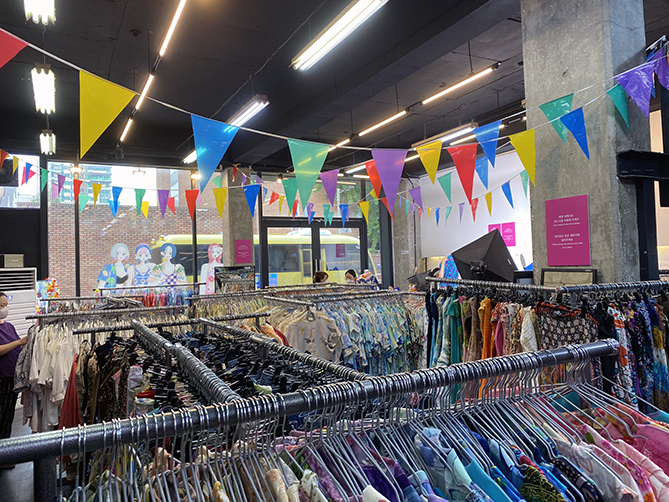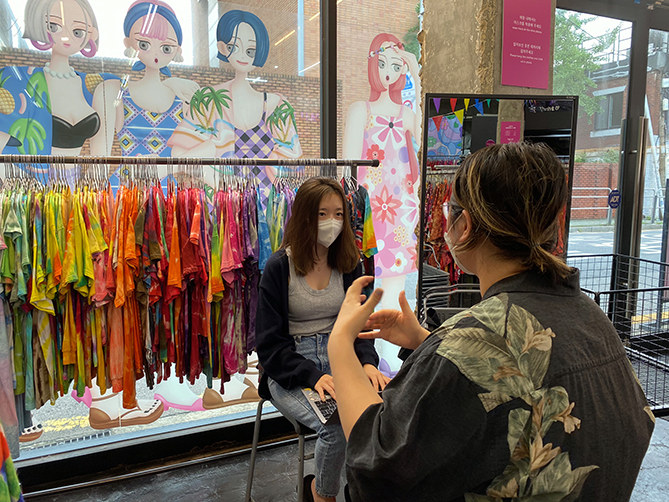With the Internet and the rise of “fast fashion” brands, it has become easier and cheaper than ever before for consumers to buy new clothes and accessories based on the latest fashion trends. But in the highly competitive world of fashion, many people – particularly young consumers in countries like South Korea – are turning to “thrifting”, or shopping at thrift stores, to find affordable clothing and accessories that fully express their individuality.
The rise in thrifting’s popularity among the young may seem like just another fad, as many consumers continue to seek out popular brands and stereotypes of used clothes being undesirable persist. Many entrepreneurs, however, believe that thrifting is here to stay and has several underappreciated benefits. For example, in a 2019 article, the World Bank warned of the environmental impact of constantly manufacturing new clothes, citing statistics from the United Nations Environmental Program and the Ellen MacArthur Foundation that “the fashion industry is responsible for 10% of annual global carbon emissions, more than all international flights and maritime shipping combined.” Since thrift stores sell items donated by people who no longer need them, their carbon footprint is much smaller if not non-existent.

But thrifting is not only about being socially conscientious – it is also about fun and making one’s own fashion statement, especially for teenagers. In a survey I conducted among 20 high school students in Korea and Hong Kong, all 20 respondents said they have previously visited a thrift store or bought second-hand clothing, with “unique style” being the most significant factor (chosen by 17 respondents) and “affordable prices” and “environmentally friendly” the second and third most significant factors. Based on these outcomes, I decided to see for myself what makes thrifting so appealing to young fashionistas.

To get a better sense of how the thrifting industry is growing in Korea, I visited Million Archive, a popular independent thrift store located in Seongsu-dong with a large social media presence among thrifters. “Our vintage shop sells clothes with the focus of matching them with different concepts, which we change every two to three months,” Jung Eun-sol, the manager of the store, said. “Our store caters to a younger audience in Seoul, with people in their late twenties making up our biggest customer group.” Jung, who was a graphic design student before starting Million Archive, noted that “younger customers like to visit our thrift store for the fun experience we provide, as well as a welcoming environment to experiment with unique fashion styles,” and credited much of her store’s success to its artistic touches.

When asked about the recent surge in popularity of thrifting with a younger audience, Jung replied that many customers, particularly younger thrifters who may seem inexperienced, actually come to her store well-informed, including where vintage items come from and efficient ways to thrift to their tastes. “While the assumption that second-hand vintage clothing is ‘old’ or unfashionable still exists, young thrifters push that suspicion aside and really invest themselves in the items that they thrift,” Jung observed. She has no doubt that teenagers and young adults will further open themselves up to purchasing second hand vintage clothing.
If Korea, as both fashion consumers and purveyors (like Million Archive) grow more sophisticated and diversified, thrifting will hopefully further reveal its various benefits to shoppers and thrive as a sustainable form of fashion. By appealing to younger consumers not only through their keen sense of individuality but also a strong environmental and social consciousness, thrifting is poised to become one of the rarest hits – something that is both cool and wholesome.

Katherine Lee
Grade 11
Seoul International School

